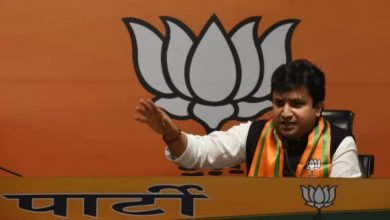Sacrificing long-term financial security for short-term satisfaction: How debt has become our new lifestyle?
Unlike our previous generations that practised the old dictum of "Save first, spend next," we have taken the bait of EMIs and Credit Cards that force us to indulge in 'commodity fetishism,' sacrificing our long-term goals.

Earlier this month, I had flocked to a nearby smartphone retail shop to explore their stock. There, I noticed a curious pattern unfold. Stacks of the newly launched iPhone 15 were lined up at the display, and the catalogue featured EMI rates and loan rates but not the entire retail price. Instead of exhibiting the total price, say Rs. 1 lakh, the retail owners displayed a placard that read, “Rs. 1800 Zero Cost EMI per month for X months after Rs. Y downpayment.”
Do the math, and you shall realise that after the last instalment, the consumer would have paid more than the amount inscribed on the MRP! Now you know why a seller tries to pitch you into purchasing a TV at EMI even when you walk into their store with the necessary cash. And let me explain why this has become a grave problem.
India has an unofficial population exceeding 142 crores, and demographers suggest that the age of two-thirds of our population lies below 35. Compounded with the fact that a significant segment of our population falls in the ‘middle class’ (neither rich nor too poor), an average Indian consumer has greater ambitions than the means to attain them. “Roti, Kapda, aur Makaan” is no longer his top priority.
According to data provided by the CRIF (High Mark), the quantum of ‘personal loans‘ and ‘loans for durable goods’ have increased over twofold since 2019! Market analysts have suggested that Indians have borrowed more than Rs. 174.3 crore as ‘retail loans’ in 2022 alone.
The popularity of Equated Monthly Instalments (EMIs) is intrinsic to the problem, as they cater to a particular segment of our demography and have made them addicted by fulfilling their short-term dreams and shrouding them in a long-term debt trap. Market analysts have suggested there has been a 2000% increase in EMI lending since 2019!
Usually, when we take a loan from a bank, we keep something as a mortgage. However, in the case of EMIs for goods like smartphones, the product itself is the mortgage! Even those who lack ‘credit history’ or belong to ‘underbanked segments’ can avail of EMIs at higher rates. However, their products come pre-installed with applications that track their transaction histories and automatically lock the device if the buyers miss the date of EMI return.
The loan market wants us to buy more than we need, and the ballooning of the market value of fintech institutions like ‘TVS Credit’ and ‘Bajaj Finserv,’ is evidence of the same. Today, the average borrowing of an Indian significantly exceeds the per-capita GDP. In 2021, while India’s per-capita GDP grew only by 8.5%, the per-capita loans increased by a whopping 17.9%!
Presently, Indians are increasingly vulnerable to EMI Mafias and Loan App Scams. EMI Mafias are employed to extort money from defaulting consumers, and Fake Loan Apps use sophisticated tricks to trap unpresuming consumers through cybercrime. These Loan Apps, which are neither approved by the RBI nor regulated by the Government, bait consumers into taking quick loans with little or no paperwork. These apps can access their contacts, gallery, search history and camera, and if the debtor fails to pay the loan amount in time, the loan companies harass them by morphing their images and blackmailing them into committing suicide.
A generational shift in values is one of the main reasons behind such disproportionate inclination toward ‘consumerism.’ Unlike the millennials and Gen Z, our previous generations practised the old dictum of “Save first, spend next.” But we seem to have taken the bait of EMIs and Credit Cards as we keep indulging in ‘commodity fetishism’ under the ‘fear of missing out’ (FOMO).
“The things you own end up owning you.” This message holds more relevance today than ever as debt has become the new lifestyle of India. Unless we show moral restraint from materialistic debauchery, increasing reliance on loans and EMIs shall end up killing our dreams instead of empowering them!



